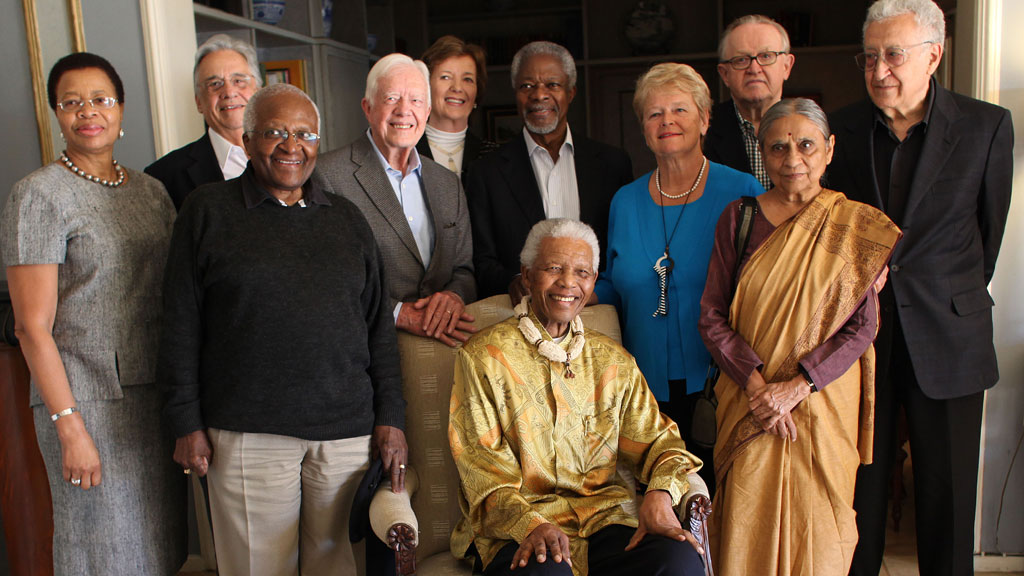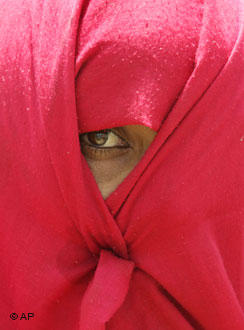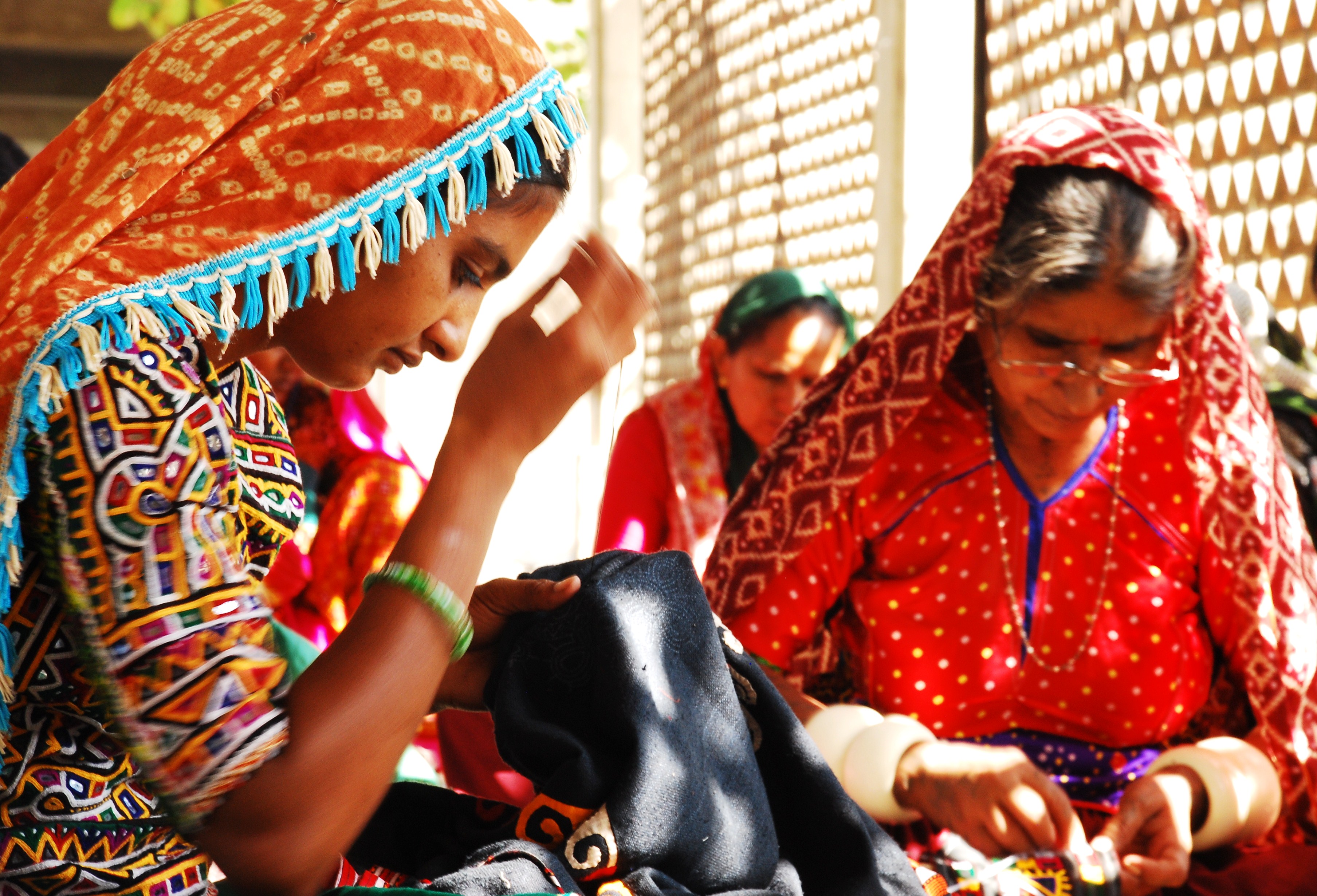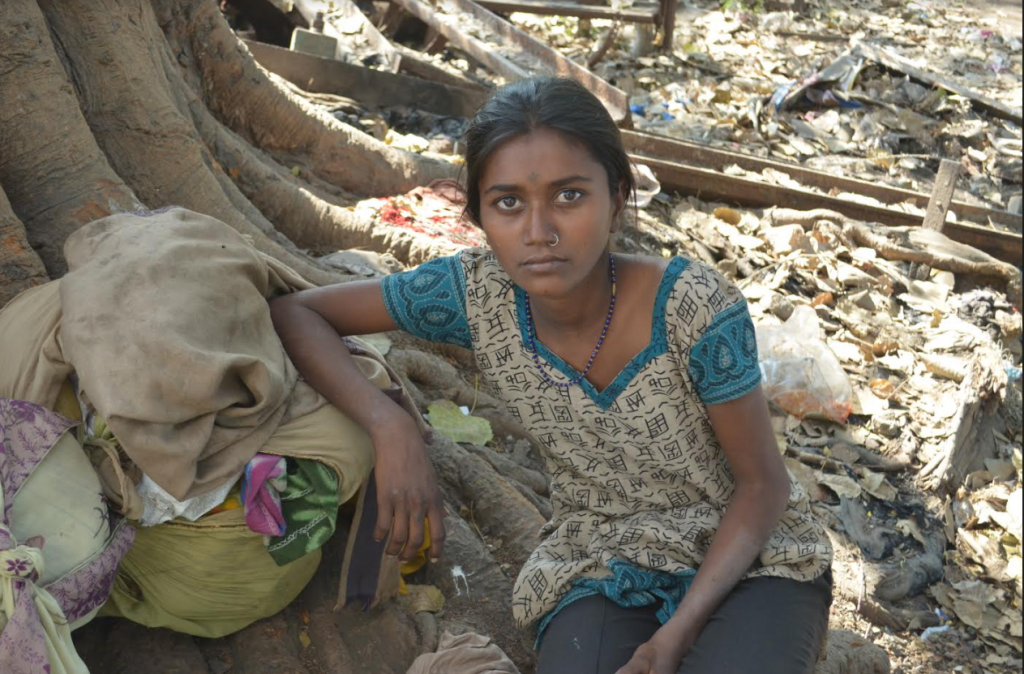Labour with dignity
India is busy deliberating on its next possible Prime Minister- Narendra Modi, who has been marketing his model of development in India’s Gujarat. But in the dry and arid hinterland of India’s western state , one woman who believes in Gandhi’s ideals is working tirelessly to uplift women.The white–silvery shimmering line that blurs at a distance is just a mirage. There is no trace of water for miles together in the Little Rann of Kutch in Gujarat. Parched, brown land spreads across in a tiled pattern in this beautiful desert. But there is no sign of any life, not a single tree, no desert animals, no birds, just empty stretches of aridness and a hot salty desert wind.
Amidst this wilderness, is a young girl draped in a blue sari wearing black gum boots – with her 5-month-old baby tied to her back and raking salt in the brackish waters of a salt pan under the scorching afternoon sun. Kalpa has been a salt worker or “Agariya” ever since she can remember. Born in the Agariya tribes that lead a nomadic life spending eight to nine months in a year producing salt in the Rann, she says this is what she has done all her life, but she is determined that her daughter will follow a different path.
India’s first trade union for women
Enabling Kalpa dream big for her child by providing child care centres or balwadis and educational facilities for children in this far-flung corner is SEWA (Self Employed Women’s Association), India’s first trade union for women that was started by a lawyer and a follower of Gandhi, Ela Bhatt in 1972. “At that time (1972) there were so many women who were economically active but not recognized by the law or even recorded in the census of India as workers despite working for 10-12 hours a day. They were unprotected and vulnerable, despite being almost 89 percent of India’s labour force at that time,” says Bhatt.
Working with the Textile Labour Association in 1972, Ela Bhatt felt there was a desperate need to organize these unskilled women to give them more bargaining power in the job market. It was also the year that Rose Schneiderman, one of the pioneers of the international women’s labour movement, credited with the coining of the most famous phrase “bread and roses” passed away. By then, the world had seen many women unions such as the Women’s Trade Union League, but in India, no one had heard of it and it remained an alien idea. So when Ela Bhatt went to register SEWA, she faced what she calls “conceptual resistance.” She says it took almost a year to convince the registrar of trade unions that these women too are workers and they too have the right to be registered.
Women construction workers
Once registered, SEWA soon branched out in different labour sectors to fulfil its promise of full employment and self reliance to women by providing work, income, food and social security. It revolutionized this coming together of women by adopting the cooperative structure. “Being a Gandhian, I always believed in forming of organizations namely union, namely cooperative, because in such structures the members themselves are the owners,” says Bhatt.
One such member owner is Galal Ben. A mother of three, she is part of SEWA’s cooperative society for women construction workers called Rachaita Bandhkam Mandli. A strong and robust woman, her physical appearance matches her mental strength. For 15 years she has been working at building construction sites as a daily wage labourer, grinding cement and carrying huge loads of bricks on he
r head. But for 12 hours of hard physical labour she would get paid only a paltry amount, anything between 35 to 80 rupees a day. There were also days when she would be without work. But after joining a cooperative society,with 300 other women labourers like her, she is now ensured of work every single day. Daily wages too have gone up to almost Rs 400 per day, thanks to the elimination of middle men. “Today I earn triple of what my husband earns. He treats me like an equal and the society too respects me. Like any other modern city woman I too use a mobile phone”, says Galal, proudly displaying her cell phone and the pictures of her children, all of whom go to school.
Women are an integral part of the economy
The cooperative structure is not new to Gujarat. The state has been known for its cooperative model since the early days of Amul, a milk cooperative union that took off in 1946, but many have accused it of poor representation of women in cooperative bodies. Ela Bhatt has been using this model effectively to empower women in each labour sector. Today, over 100 SEWA cooperative societies in different sectors are providing employment to over 10 million women.
In SEWA, one thing has led to the other. SEWA believes that women are an integral part of the country’s economy and it is essential to harness their labour in the mainstream of economic development. It was an idea that had mushroomed from a simple question asked by one of the SEWA members. “Chanda ben, one of the old clothes dealer said, why can’t we have our own bank?

Ela Bhatt (far right) was part of Nelson Mandela’s “Elders,” a group Mandela founded as “a fiercely independent and robust force for good.’ The Elders include Jimmy Carter, Kofi Annan, Desmond Tutu and Lakhdar Brahimi among others.
I said, we are poor, so she said but we are so many,” says Bhatt while describing what led her to start India’s first micro-finance institution. She felt that poor women are vitally concerned with the livelihood of their households and therefore, they are the most eligible borrowers, but they are the ones who have been excluded from mainstream banking.
Banking for women
So in 1974, 4000 women came together, each contributing 10 rupees (0.12 euros) to raise the share capital and that’s how the first Sewa bank was registered as a co-operative bank under the dual control of The Reserve Bank of India and the state government in Gujarat. Since then, it has been providing micro-financing, banking and even insurance to poor women.
Four decades later, many have followed suit. Today, hundreds of thousands of people have access to microfinance due to government and NGO-sponsored programmes. But what sets SEWA apart is that they are open to new ideas. SEWA now provides doorstep banking for each of its 400,000 active depositors and pension schemes for its ageing women members. Currently, 80,000 members have been linked with the micro pension Scheme.

The “purdah” system is a practice of gender seclusion in India where women wear veils or hide behind screens to avoid contact with men and strangers.
Benefitting from this pension scheme are women like 65-year-old Puri Ben. Her enthusiasm defies her age. While embroidering an intricate traditional piece of banas craft (embroidery that comes from the Banaskanth region of Gujarat), she breaks into a song and dance. Wearing her traditional skirt and choli (blouse) she pulls in the younger girls and the new entrants of Hansiba to join her. Hansiba is an association of almost 15,000 women under SEWA. These women sell their embroidery and craft under the Hansiba brand. 65 percent of all sales go directly to the artisans and they themselves are the shareholders and suppliers of the company. But while they are independent and self-sufficient now, Puri ben says it wasn’t easy to begin with.
Fighting the ‘purdah’ system
Women who stayed mostly in purdah (veil) had to fight social ostracism to get out of their homes and sell their work. The men got together against them and declared through a village council that households whose women would step out to sell would be boycotted and no one would marry the girls of that house. The women including Puri ben then collectively decided to fight this diktat. They decided to stop cooking for their men until this order was withdrawn. Finally, the men gave in. Today these women earn with dignity and thank SEWA for backing them in their difficult times.
SEWA has always stood by its women. When Gujarat was burning in 2002, battling one of the worst communal riots, 40,000 SEWA members were directly affected. SEWA held relief camps for both Hindus and Muslims, set up child care centres and helped people work from camps so they could continue earning their livelihood. Bhatt says, “There are so many successes but there are many, many, many more failures as well but each step of organizing and then acting in the right way, in the right direction is empowering.”
Author: Priyali Sur
Editor: Manasi Gopalakrishnan
You can follow Priyali Sur on Twitter @priyalisur.








